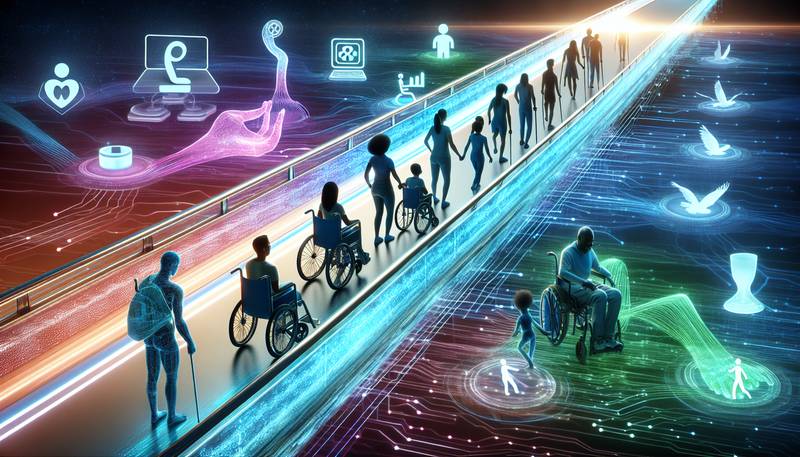Tech for Accessibility: Bridging the Gap for People with Disabilities

In today's world, technology is advancing at an unprecedented pace, and with it, the potential to improve the lives of people with disabilities is greater than ever before. With the help of innovative tech solutions, individuals with disabilities can lead more independent and fulfilling lives, breaking down barriers and bridging the gap between the able-bodied and disabled communities.
The Impact of Technology on Accessibility
Technology has always had the power to transform lives, and when it comes to accessibility, this couldn't be truer. From screen readers and voice recognition software to wheelchair-friendly transportation apps, tech solutions are making the world a more inclusive place for people with disabilities. These tools not only provide practical assistance but also help to empower individuals, giving them the ability to participate more fully in society.
Assistive Devices and Software
Assistive devices and software are at the forefront of tech for accessibility. Screen readers, for example, allow individuals with visual impairments to access digital content by converting text to speech. Voice recognition software enables people with motor disabilities to control their devices using only their voices. And for those with hearing impairments, captioning and sign language interpretation apps make communication and media consumption more accessible.
Accessible Transportation and Navigation
Getting around can be a challenge for people with disabilities, but technology is making it easier. Ride-sharing apps like Uber and Lyft now offer wheelchair-accessible vehicles in many cities. Navigation apps like Google Maps and Waze are incorporating features to help individuals with disabilities find the most accessible routes. And for those who use public transportation, apps like Moovit provide real-time updates on accessible buses and trains.
Smart Home Devices
Smart home devices are also playing a significant role in making homes more accessible for people with disabilities. Voice-activated assistants like Amazon's Alexa and Google Home allow individuals to control lights, thermostats, and other household appliances without having to physically interact with them. Smart doorbells and security cameras provide added safety and independence for those with mobility or sensory impairments.
Overcoming Obstacles with Tech
While technology has the potential to greatly improve accessibility, there are still many obstacles to overcome. One of the biggest challenges is ensuring that tech solutions are affordable and widely available. Many assistive devices and software can be prohibitively expensive, putting them out of reach for those who need them most.
Another issue is the need for ongoing support and training. People with disabilities may require assistance in learning how to use new technologies, and without proper support, they may not be able to take full advantage of the tools available to them.
Additionally, there is a need for more inclusive design in tech development. Products and services must be created with the needs of people with disabilities in mind, ensuring that they are not only accessible but also user-friendly.
The Future of Tech for Accessibility
The future of tech for accessibility is bright, with new innovations constantly emerging. From exoskeletons that help individuals with mobility impairments walk to virtual reality experiences that provide sensory input for those with autism, the possibilities are endless.
As the world becomes more aware of the importance of accessibility, tech companies are starting to prioritize inclusive design in their products. And with continued advocacy and education, we can hope for a future where technology truly bridges the gap for people with disabilities, creating a more equitable and accessible world for all.
Conclusion
Technology has the power to change lives, and for people with disabilities, it can be a game-changer. From assistive devices and software to accessible transportation and smart home devices, tech solutions are helping to bridge the gap between the able-bodied and disabled communities. As we continue to push for more inclusive design and affordable solutions, we can look forward to a future where technology empowers individuals with disabilities to lead more independent and fulfilling lives.
With continued innovation and a focus on accessibility, the tech industry has the potential to break down barriers and create a more inclusive world. So let's embrace the power of technology to help people with disabilities reach their full potential and live life to the fullest. The future is accessible, and it's up to us to make it happen.


